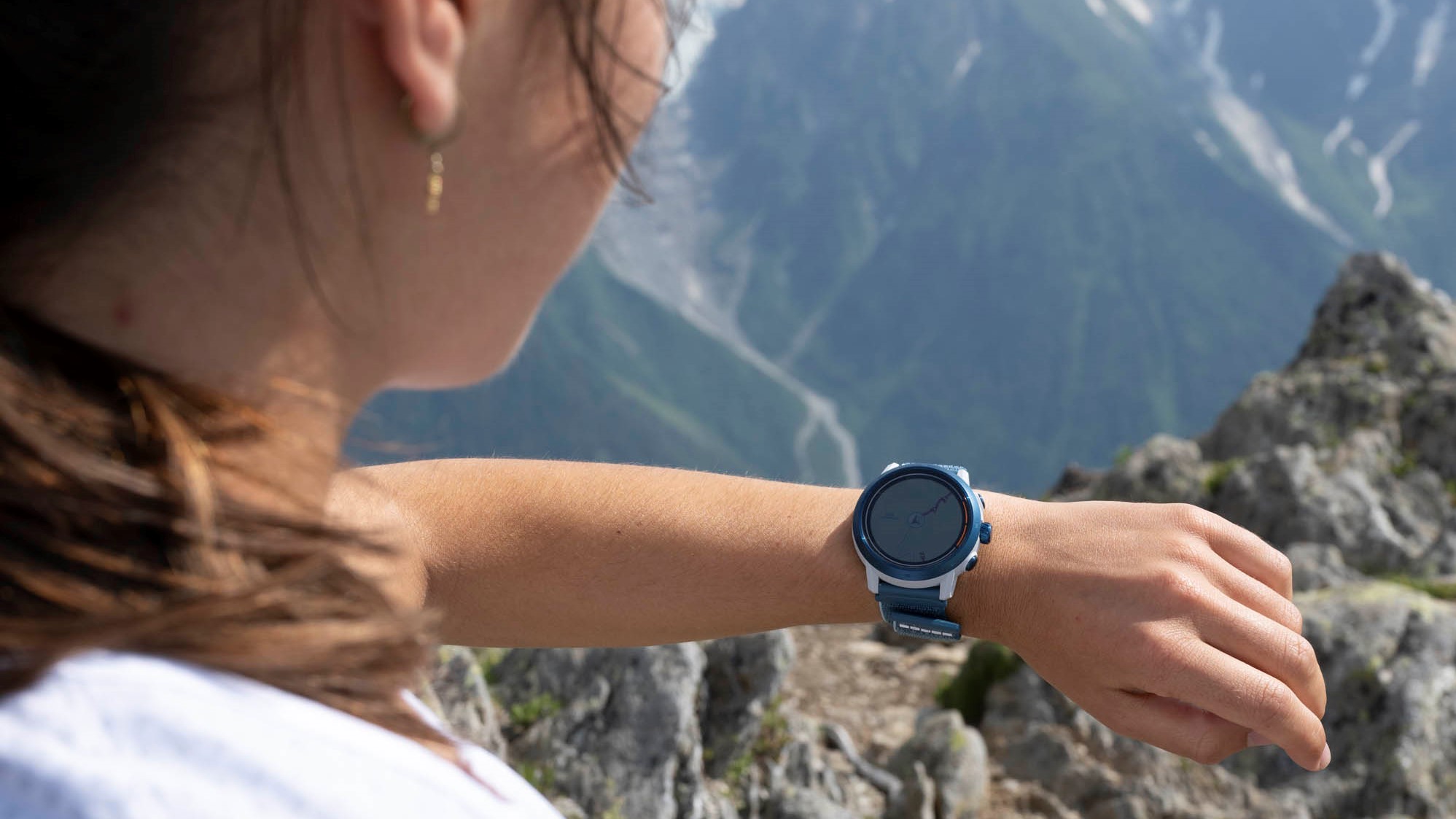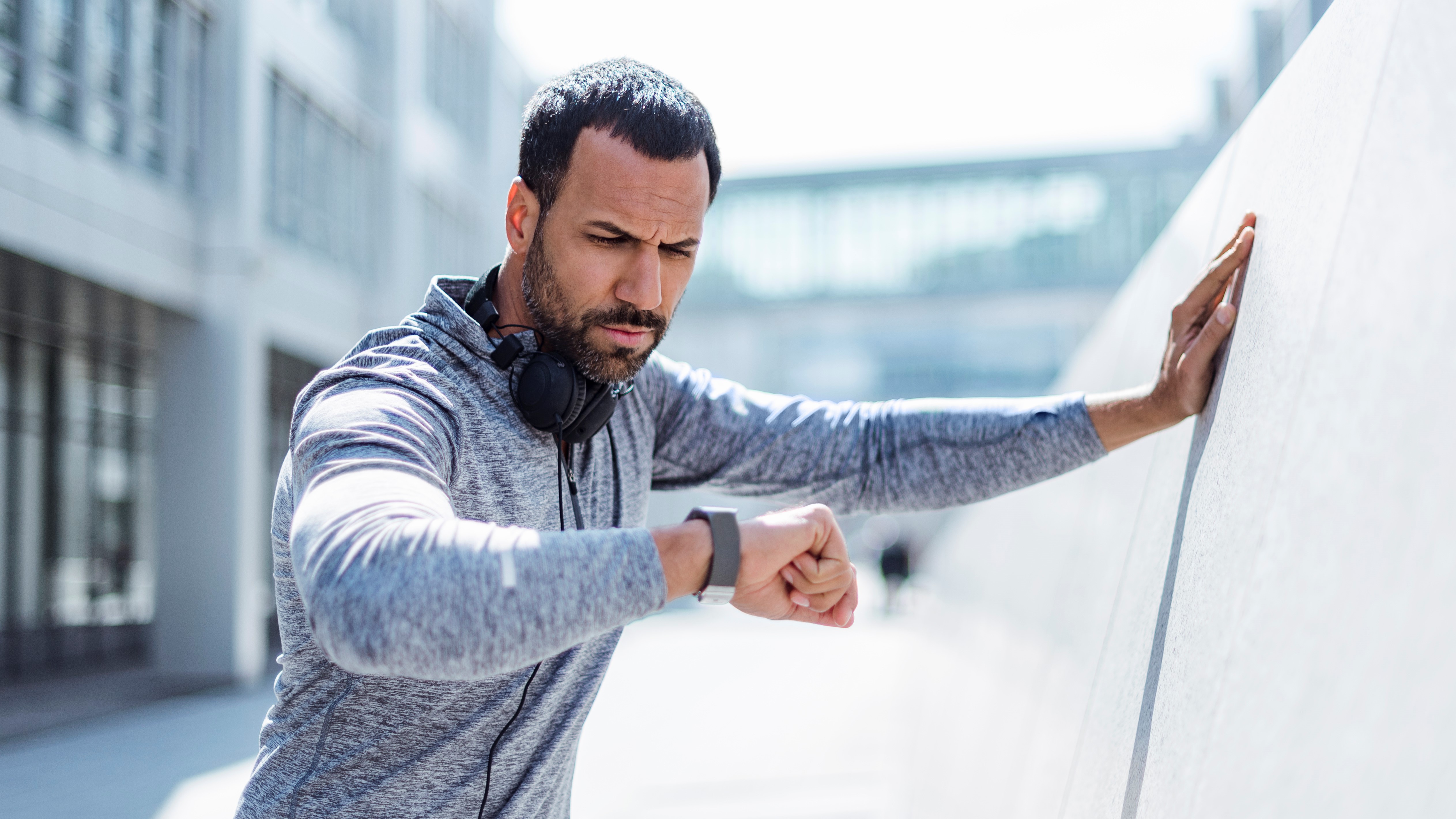How does your sports watch decide how much recovery time you need? And is it accurate?
We speak to a running coach on how to understand your watch’s recovery times, and how to know when you’re ready to hit the trail again

I’ve recently converted to wearing a GPS watch after bucking the trend for years and, while I’m loving all the data and insights into each run, hike or swim I take, there’s one metric that I’m not totally leaning into – recovery time.
I’ve been testing out the Coros Pace 3 and the other day, I pulled on my new trail running shoes and went on a lovely five mile trail run near Arrochar in the Scottish Highlands. The route took me on an undulating climb that entailed about 1,300 ft of elevation gain and along the way I had stunning views out over Loch Long. I took my time and it all felt suitably challenging so when I came down in search of some yoga stretches, a hot bath and dinner, I felt satisfied and hungry, but not exactly spent. My watch, however, insisted I was exhausted and needed 91 hours to recover.
Ninety one hours? That’s nearly four days! I’ll admit that I sometimes overdo things (in the four days preceding my trail run, I also did a 10k road run and an 11k hike) but I can’t think of a time where I didn’t feel recovered after a day, or two at the most.
Keen to better understand how sports watches decide on recovery time, whether it’s accurate and how to know when I’m ready to go again, I decided to do some digging on the matter.

How does your sports watch decide how much recovery time you need?
First off, I was interested to know exactly how my watch decides how much recovery time I need. I start by checking out COROS’s guide to their recovery guidelines, and they advise that recovery time varies from person to person and depends on several metrics:
- Marathon level: a tool to show your running ability compared to other COROS athletes around the world.
- Training load: measures the impact brought to your body from the training.
- Running performance: provides feedback on how good your most recent run was compared to your overall running fitness, ranging from low to excellent.
I’m not totally sure how marathon level would play into my recovery time, but I can definitely understand the influences of workout intensity and performance. Though that said, sometimes I’m running slower on purpose, and not because I’m fatigued, so that metric could be skewed.
Out of interest, I also checked Garmin’s formula for estimating recovery time when you use one of their wearables like the Fenix 7 or the Forerunner 265. Their prediction comes down to how long you worked out and how challenging it was.
All the latest inspiration, tips and guides to help you plan your next Advnture!
“The amount of time added to your recovery timer is determined through analysis of the duration and intensity of your recorded activity interpreted in light of your current fitness level and activity history.”
Any time remaining on your countdown timer at the start of a new activity is also taken into consideration, so if, like me, you keep working out before you reach full recovery, your expected recovery might be longer.

How accurate is sports watch recovery?
It doesn’t take long for me to realize that asking a computer how it computes things is probably a sign of madness, so next I decide to consult an actual human. That human comes in the form of Matt Hensley, a Colorado-based running coach and founder of Boulder Underground. Running, as it were, it runs deep in Hensley’s veins. Both his parents were runners, his dad a marathoner who ran at the University of Oregon while Steve Prefontaine was there cranking out 5,000 meter records.
Hensely describes his training approach as a blend of old school – “a lot of running and training back then was learning to run by feel. In the early days you used to look at a clock when you left the house and you’d look at it again. That's how you measured how far you ran” – and new school.
“GPS watches and technology are tools that you can use to your advantage, but you shouldn’t become a slave to them either.”
As for how accurate sports watch recovery timing is, well he says that if my watch says to rest 60 hours one day then the next time it says 30 hours, that's based on something.
“The workout that requires 60 hours of recovery time was probably more substantial than the other.”
However, the big takeaway I get from talking to Hensley is that, just because I haven’t fully recovered from my workout, doesn’t mean I can’t, or shouldn't, get moving.
“Getting out the door for easy runs is a form of active recovery. So what I’d take from the watch then is, ok, maybe I shouldn’t do a very strenuous workout within that time period.”
In those instances, Hensely encourages his clients to try what he calls a Mickey Mouse workout, something like an easy run or strides, which can be especially helpful if your schedule doesn’t allow you to just switch up your days.
“It’s just fun, you’re just shaking the legs out, there’s no expectations of pace.”
Other times, however, your watch might be telling you that you’re fully recovered, but your body has a different story, and that, Hensely explains, can be down to factors outside of duration and intensity.
“Your watch might tell you that you’re ready to work out but then when you get out there, you feel terrible. Maybe you didn’t fuel beforehand or maybe you had a stressful day or didn’t get much sleep the night before.”
Of course, your watch won’t know if you skipped breakfast or got reamed out by your boss before your lunch time run. It does use heart rate, but there are things that can affect that too, such as time of day and caffeine intake. There is one gauge, however, that will give you an accurate reading, and that’s your body.
“The one thing that almost never lies to me is how I feel. Your feel won’t lie to you. You’ll know if you’re ready or not.”

How much recovery time do you need?
With so many variables, it’s easy to think that the timing on your watch might be a little arbitrary. My watch pretty much always seems to think I’m at least two days away from being fully recovered, but despite my protests otherwise, this actually does kind of jive with Hensely’s training method. He says that, while it all depends on the athlete, the intensity and duration of the workout, he’ll typically space out workouts by two days. So if they work out on Monday, you won’t workout again till Thursday.”
But, he says, that’s only if they do the Monday workout properly.
“If they go too fast on Monday, well it’s going to take them much longer to recover so they might need a little bit more rest.”
When it comes to long runs, Hensley says that the further you go, the more you need to be thinking about nutrition and hydration. For every 30 minutes that you add onto a run, an added level of fatigue occurs, so the demands of a two-hour run are way greater than those of a 90 minute run.
“The longer that run becomes, the more important it is that you get electrolytes, carbohydrates, fluids and then protein and carbs after the run.”
If somebody neglects proper nutrition and hydration, their recovery time is going to significantly increase, no matter what the wearable says.
Ultimately, for Hensley, the best gauge for recovery is how you feel, and it’s vital not to get too bogged down in the watch metrics.
“It’s this amazing tool that can give you a lot of information, however if used incorrectly it can be a negative. When it comes to the watch, don’t let it take the joy away from running, from getting out the door and exploring new places or running with friends.”
Julia Clarke is a staff writer for Advnture.com and the author of the book Restorative Yoga for Beginners. She loves to explore mountains on foot, bike, skis and belay and then recover on the the yoga mat. Julia graduated with a degree in journalism in 2004 and spent eight years working as a radio presenter in Kansas City, Vermont, Boston and New York City before discovering the joys of the Rocky Mountains. She then detoured west to Colorado and enjoyed 11 years teaching yoga in Vail before returning to her hometown of Glasgow, Scotland in 2020 to focus on family and writing.

